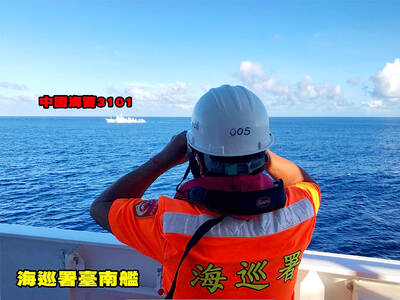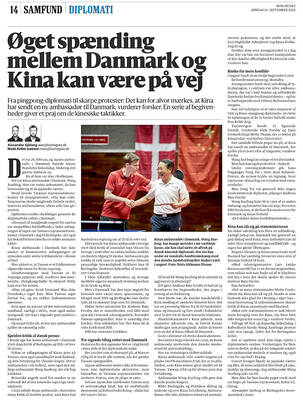Taiwan would next year start trials to monitor ultrafine PM0.1 particles in Taichung and Kaohsiung to help develop a stable foundation for monitoring the pollutants, the Ministry of Environment said today.
PM0.1, or particulate matter with a diameter of 0.1 micrometers or less, is relatively unstudied and unmonitored in Taiwan, and its sources and characteristics are not fully understood by the ministry, Deputy Minister of Environment Shen Chih-hsiu (沈志修) said in a report to the Legislative Yuan.
The ministry has included the issue in its air quality policy white paper as a key focus of air quality management over the next 10 years, he said.

Photo: CNA
PM0.1 particulates are about one-700th the width of a human hair, making them difficult for the body to defend against and potentially very harmful to human health, Shen said.
The WHO, which included ultrafine particles in its global air quality guidelines for the first time in 2021, says that exposure to such particles might increase the risk of systemic inflammation and cardiovascular or lung diseases.
Road traffic and other forms of transportation, such as aviation and shipping, are usually the main sources of the particles, but they can also come from industrial sources, power plants, residential heating and biomass burning, the WHO says.
Research has found that PM0.1 concentrations vary significantly across urban areas and throughout the day, such as during rush hour versus off-peak times, unlike PM2.5, which tends to be more evenly distributed, Shen said.
Taiwan monitors PM2.5 and PM10 as part of its overall air quality monitoring system.

The Coast Guard Administration (CGA) yesterday said it had deployed patrol vessels to expel a China Coast Guard ship and a Chinese fishing boat near Pratas Island (Dongsha Island, 東沙群島) in the South China Sea. The China Coast Guard vessel was 28 nautical miles (52km) northeast of Pratas at 6:15am on Thursday, approaching the island’s restricted waters, which extend 24 nautical miles from its shoreline, the CGA’s Dongsha-Nansha Branch said in a statement. The Tainan, a 2,000-tonne cutter, was deployed by the CGA to shadow the Chinese ship, which left the area at 2:39pm on Friday, the statement said. At 6:31pm on Friday,

The Chinese People’s Liberation Army Navy’s (PLAN) third aircraft carrier, the Fujian, would pose a steep challenge to Taiwan’s ability to defend itself against a full-scale invasion, a defense expert said yesterday. Institute of National Defense and Security Research analyst Chieh Chung (揭仲) made the comment hours after the PLAN confirmed the carrier recently passed through the Taiwan Strait to conduct “scientific research tests and training missions” in the South China Sea. China has two carriers in operation — the Liaoning and the Shandong — with the Fujian undergoing sea trials. Although the PLAN needs time to train the Fujian’s air wing and

The American Institute in Taiwan (AIT) put Taiwan in danger, Ma Ying-jeou Foundation director Hsiao Hsu-tsen (蕭旭岑) said yesterday, hours after the de facto US embassy said that Beijing had misinterpreted World War II-era documents to isolate Taiwan. The AIT’s comments harmed the Republic of China’s (ROC) national interests and contradicted a part of the “six assurances” stipulating that the US would not change its official position on Taiwan’s sovereignty, Hsiao said. The “six assurances,” which were given by then-US president Ronald Reagan to Taiwan in 1982, say that Washington would not set a date for ending arm sales to Taiwan, consult

A Taiwanese academic yesterday said that Chinese Ambassador to Denmark Wang Xuefeng (王雪峰) disrespected Denmark and Japan when he earlier this year allegedly asked Japan’s embassy to make Taiwan’s representatives leave an event in Copenhagen. The Danish-language Berlingske on Sunday reported the incident in an article with the headline “The emperor’s birthday ended in drama in Copenhagen: More conflict may be on the way between Denmark and China.” It said that on Feb. 26, the Japanese embassy in Denmark held an event for Japanese Emperor Naruhito’s birthday, with about 200 guests in attendance, including representatives from Taiwan. After addressing the Japanese hosts, Wang